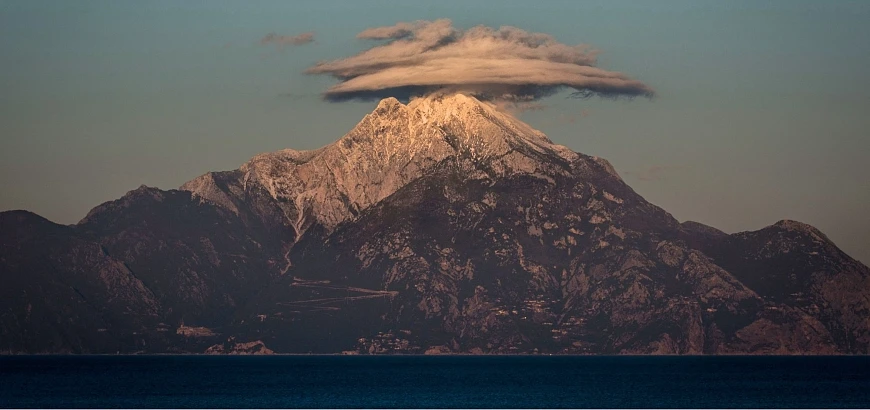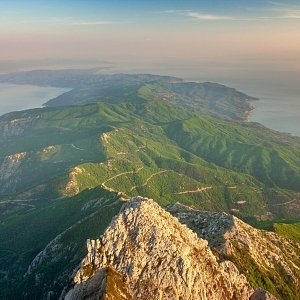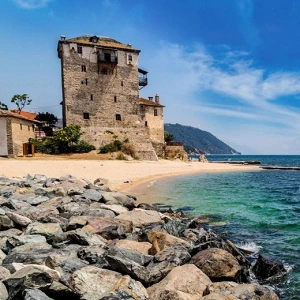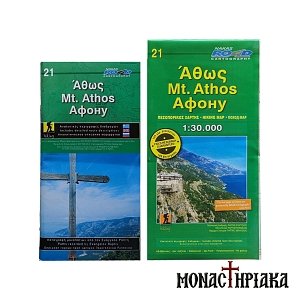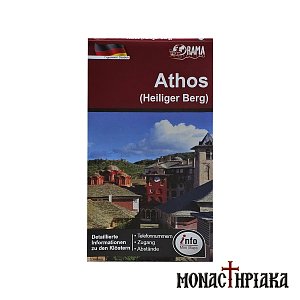Mount Athos has a history dating back to the 12th century and remains remarkably well-preserved through the ages, both in its cultural heritage and natural landscape.
Athos, the emblematic summit of the Holy Mountain
The peak of Mount Athos rises majestically above the Athonite peninsula, reaching an altitude of 2,033 meters. This impressive mountain stretches eastward toward the Gulf of Ierissos and westward toward the Singitic Gulf, offering breathtaking natural beauty.
Climbing the summit of Athos
Although Athos is not among the tallest mountains in Greece, the climbing to its summit is particularly challenging. The difficulty lies in starting from sea level, requiring hikers to cover the entire elevation.
Essential equipment for the ascent on Athos peak
Hikers and nature enthusiasts often wonder how to climb to the summit of Athos, what is the best season and the safest path. Answers may vary, but the hikers should never forget the importance of proper equipment.
The climb demands experience and good preparation. Checking the weather forecast beforehand is vital. Rain, storms and lightning can be extremely dangerous and even life-threatening.
Essential gear includes a headlamp, sleeping bag, dry food, water, electrolytes, trekking poles, a mobile phone with GPS and detailed physical maps of the hiking trails. Mobile signal coverage may be unreliable in certain areas, so a detailed map with paths and routes of Mount Athos is required.
Explore here: Hiking Map of Mount Athos - Detailed
Find here: Maps of Mount Athos
Overnight stay during the ascent on the summit of Mount Athos
An overnight stay may be necessary during the ascent. At the location known as «Stavros», there are small shelters suitable for 3-4 people, offering basic amenities such as a water well. The path to these shelters is stunning, passing through forests of chestnut, fir and pine trees.
At higher altitudes, the Panagia refuge (approximately 1,500 meters) is ideal for staying to acclimate to the climatic conditions before the final ascent. This shelter can accommodate 10-12 people and is easily accessible by animals from Saint Anne or Kerasia.


Donkeys are often used by monks to transport goods, but also to move from one place to another when distances are large and conditions allow.
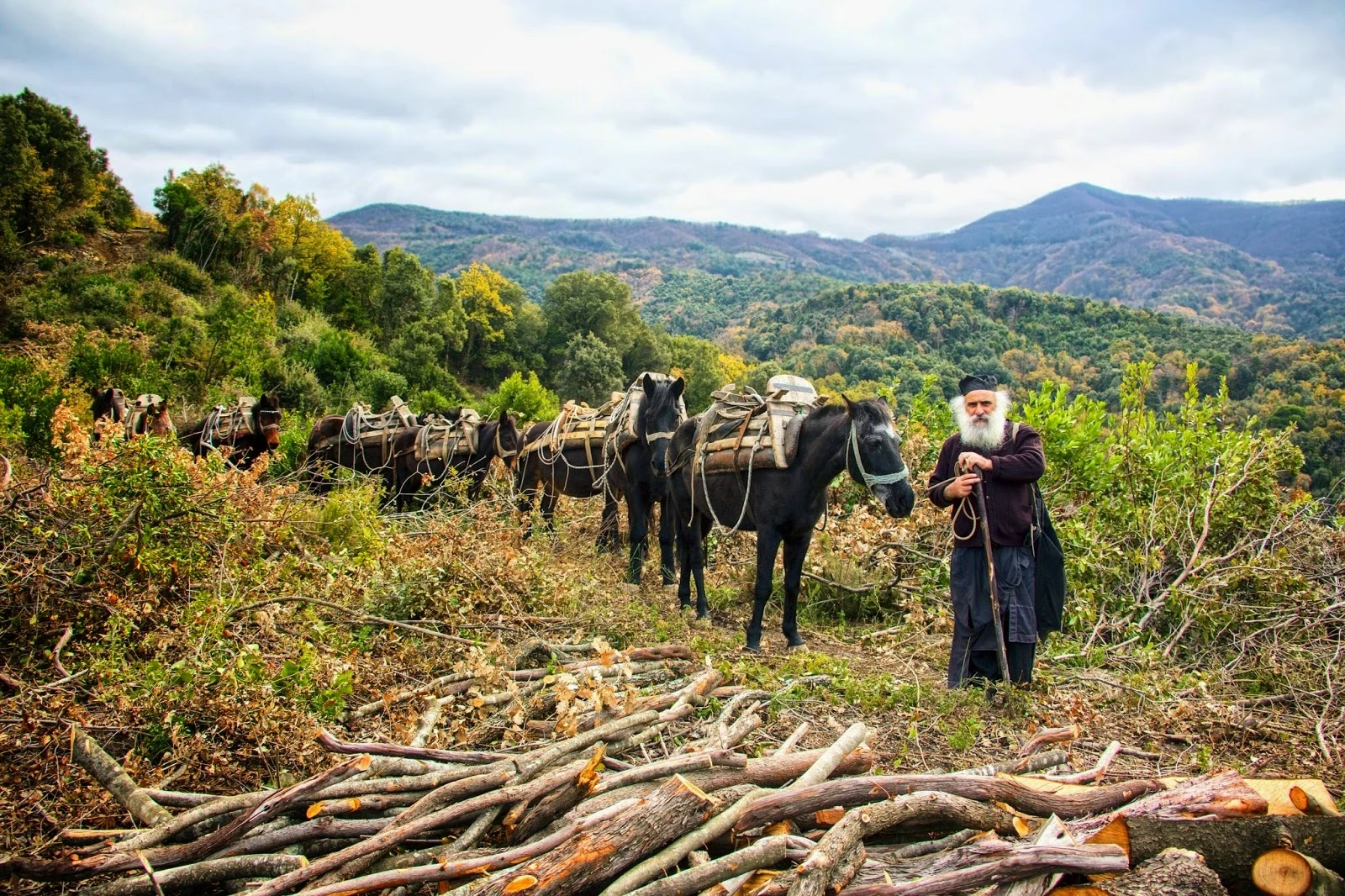
When the church of Theotokos was build
The church of the Theotokos, located at the shelter, was built in 1665 by Patriarch Dionysius III. However, evidence suggests the presence of an earlier church in the area, as Saint Jacob lived as an ascetic there before 1520.
Despite harsh weather conditions, the church was preserved and renovated in 1972 by the Monastery of Great Lavra.
Read here: Holy Monastery of the Great Lavra: the oldest Monastery and first in the hierarchy of Mount Athos
Starting points for the ascent of Mount Athos
The most popular starting point for the ascent to the Athos summit is the Monastery of Great Lavra. Alternatively, one can begin from the “Skala of Saint Anne” or “Kleftiko” if the sole focus is the climb.
What awaits at the peak of Athos
The first church at the peak, dedicated to the Transfiguration of the Lord, was built in 965 by Saint Athanasius the Athonite. Though it was destroyed by lightning, it was rebuilt multiple times, notably by Patriarch Dionysius III and later by Patriarch Joachim III.
The current structure dates back to 1977. At the summit, at an altitude of 2,033 meters, a 3x4 meter iron cross, erected in 1897, stands prominently.
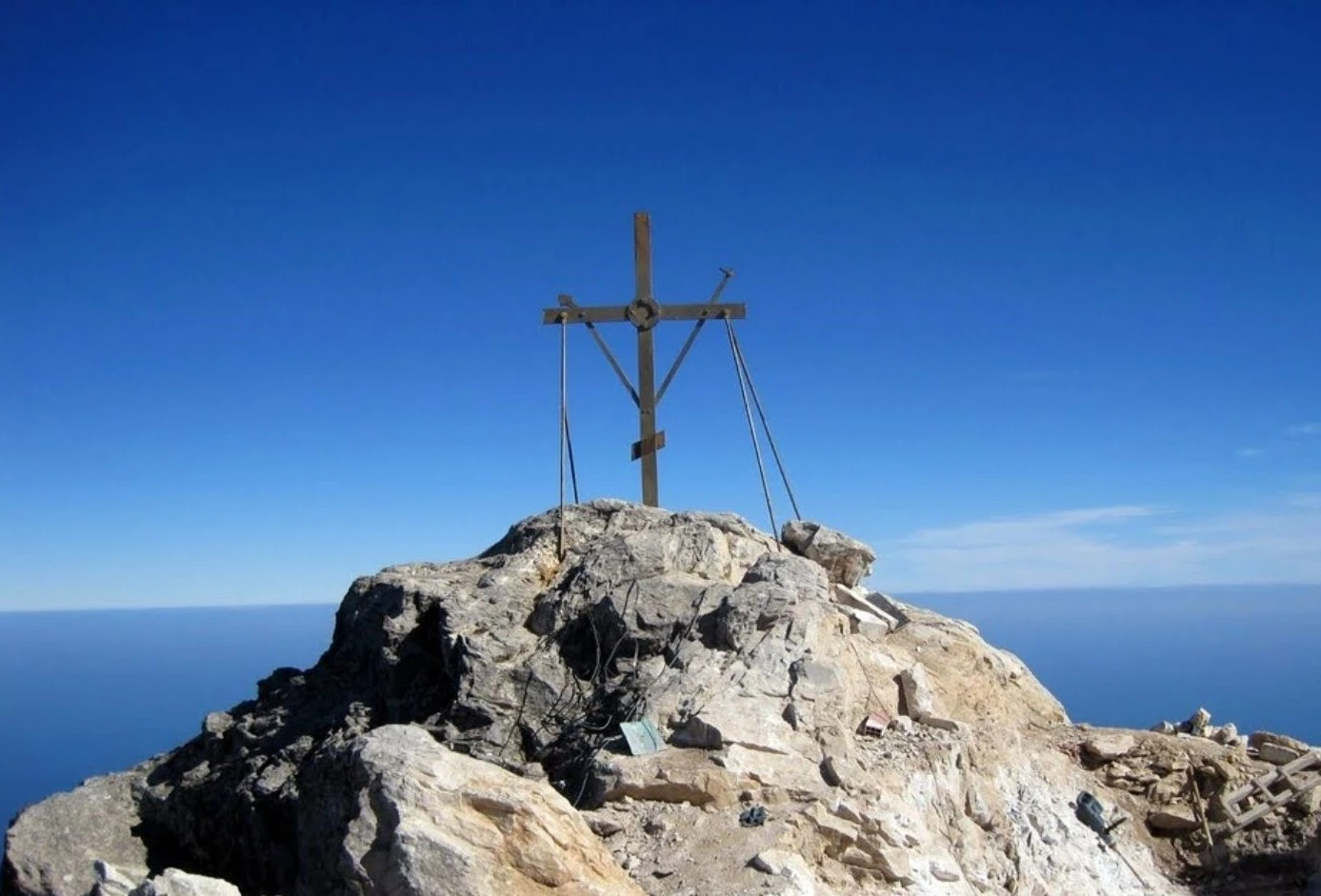
The view from the Summit
The view from the summit of Athos is breathtaking. One can admire the entire Athos peninsula, including Karyes, the Skete of Saint Andrew and the Monastery of Koutloumousi, in a landscape that inspires awe and spiritual serenity.
The Athos peninsula continues to shine and will stand lofty as long as we, faithfuls, safeguard the traditions of the monastic community and the natural environment, aptly called "The Garden of Virgin Mary."
Read the article here: Paths Trails of Mount Athos - Hiking on Athos Peninsula

